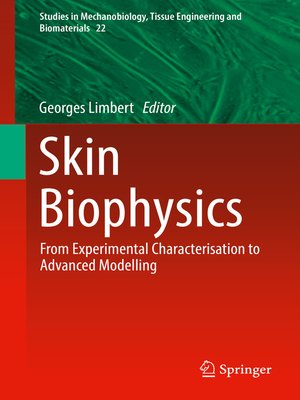Skin Biophysics
ebook ∣ From Experimental Characterisation to Advanced Modelling · Studies in Mechanobiology, Tissue Engineering and Biomaterials
By Georges Limbert

Sign up to save your library
With an OverDrive account, you can save your favorite libraries for at-a-glance information about availability. Find out more about OverDrive accounts.
Find this title in Libby, the library reading app by OverDrive.



Search for a digital library with this title
Title found at these libraries:
| Library Name | Distance |
|---|---|
| Loading... |
This book presents state-of-the-art experimental and modelling techniques for skin biophysics that are currently used in academic and industrial research. It also identifies current and future challenges, as well as a growing number of opportunities in this exciting research field. The book covers the basics of skin physiology, biology, microstructural and material properties, and progressively introduces the reader to established experimental characterisation protocols and modelling approaches. Advanced topics in modelling theories and numerical implementation are also presented.
The book focusses especially on:
1. Basic physiology, molecular biology, microstructural and material properties of the skin.
2. Experimental characterisation techniques for the skin (including imaging): in vivo and in vitro techniques and combination of those with in silico approaches.
3. State-of-the-art constitutivemodels of the skin: elastic, anelastic and mechanobiological formulations (e.g. growth, ageing, healing).
4. Applications: mechanics, damage, biological growth, healing, ageing and skin tribology.
This book is addressed to postgraduate students in biomedical/mechanical/civil engineering, (bio)physics and applied mathematics, postdoctoral researchers, as well as scientists and engineers working in academia and industry engaged in skin research, particularly, if at the cross-roads of physical experiments, imaging and modelling. The book is also be of interest to clinicians/biologists who wish to learn about the possibilities offered by modern engineering techniques for skin science research and, by so doing, provide them with an incentive to broaden their outlook, engage more widely with the non-clinical research communities and, ultimately, help cross-fertilising new ideas that will lead to better treatment plans and engineering solutions.







